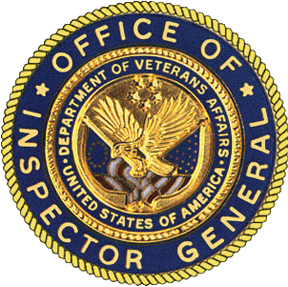Care Concerns and Deficiencies in Facility Leaders’ and Staff’s Responses Following a Medical Emergency at the Carl T. Hayden VA Medical Center in Phoenix, Arizona
Report Information
Summary
The VA Office of Inspector General (OIG) reviewed an allegation that a patient experienced a delay in receiving basic life support (BLS) during a medical emergency on the grounds of the Carl T. Hayden VA Medical Center (facility) in Phoenix, Arizona, and later died at a community hospital.
The OIG determined the patient experienced a delay in receiving BLS. The OIG learned of deficiencies related to the initiation of emergency medical care, including (1) conflicting facility policies that were inconsistent with Veterans Health Administration (VHA) requirements, (2) lack of layperson cardiopulmonary resuscitation (CPR) training, and (3) lack of an automatic external defibrillator (AED).
Quality of care concerns were also identified, which included a discrepancy between the documented plan for a wearable cardioverter defibrillator (WCD) and the absence of an order for the device, and a failure to assess vital signs at an appointment preceding the medical emergency. The OIG was unable to determine whether a change in care would have resulted in a different outcome for the patient.
Facility leaders’ lack of response upon awareness of the event did not align with high reliability organization (HRO) principles and I CARE values. The OIG identified the patient safety manager did not facilitate a thorough investigation of the related patient safety report, which resulted in an inaccurate harm assessment. Additionally, the patient safety manager and Facility Director failed to ensure a timely review of the report and investigation.
The OIG made 10 recommendations to the Facility Director related to congruence of facility policies and their alignment with VHA Directives, layperson CPR training, placement of AEDs at the facility, outpatient clinic compliance with vital signs completion, complaint review processes, communicating in alignment with HRO and I CARE values, training on patient safety reporting, and investigation and closure of patient safety reports.
The Phoenix VA Health Care System Director ensures Phoenix VA Health Care System rapid response policy is in alignment with Veterans Health Administration Directive 1177, Cardiopulmonary Resuscitation.
The Phoenix VA Health Care System Director ensures Phoenix VA Health Care System policies and procedures related to responding to medical emergencies do not conflict.
The Phoenix VA Health Care System Director ensures Phoenix VA Health Care System policy is in alignment with Veterans Health Administration Directive 1101.14, Emergency Medicine.
The Phoenix VA Health Care System Director ensures layperson cardiopulmonary resuscitation training is offered in accordance with Veterans Health Administration Directive 1177, Cardiopulmonary Resuscitation.
The Phoenix VA Health Care System Director determines the need for, and implements placement of, public access automated external defibrillators in accordance with Veterans Health Administration Directive 1177, Cardiopulmonary Resuscitation
The Phoenix VA Health Care System Director assesses outpatient clinic compliance with vital sign completion and documentation, identifies deficiencies, and takes action as warranted.
The Phoenix VA Health Care System Director reviews and assesses the need for non-clinical staff training on the use of the Joint Patient Safety Reporting system, and takes action as warranted.
The Phoenix VA Health Care System Director ensures complaints are reviewed and addressed in accordance with Veterans Health Administration Directive 1003.04, VHA Patient Advocacy.
The Phoenix VA Health Care System Director reviews organizational communication channels and ensures consistency with Veterans Health Administration high reliability organization principles and I CARE values
The Phoenix VA Health Care System Director makes certain that investigation and closure of events placed into the Joint Patient Safety Reporting system are completed per the Veterans Health Administration’s established time frame, and monitors compliance.
